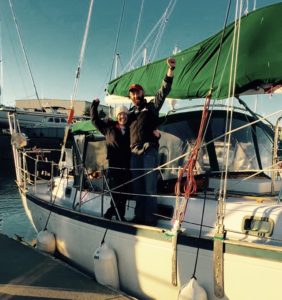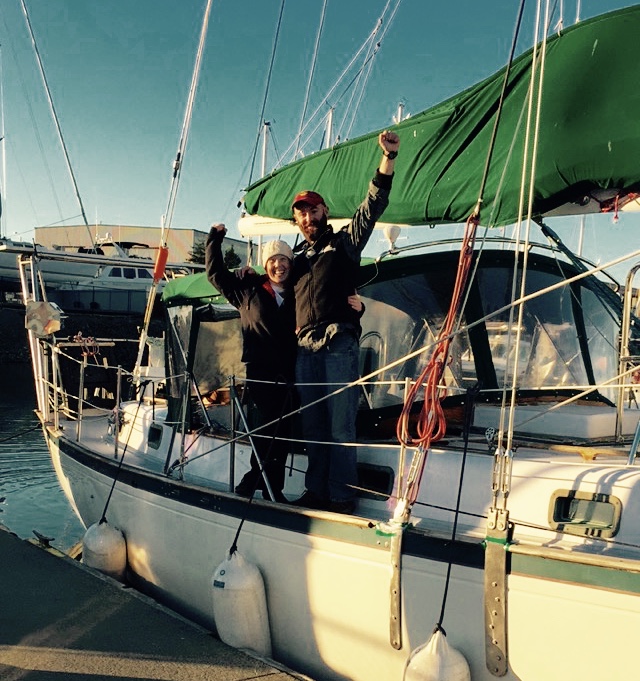Hold onto your patience level folks! This may be a long one. I have broken this story into two parts for the “tell me what I need to know if a few paragraphs or less” people, such as myself.
I mentioned previously that we weren’t allowed to work on the boat in the yard in Anacortes during evenings or weekends. So Brian and I looked for a less expensive yard where we were allowed to do our own work. The environmental rules for boat yards in Washington are VERY stringent, and there are only a few boat yards where you can sand and paint yourself.
After extensive research of all of our options around Puget Sound, we decided to take the boat out of the water at the Boat Haven Marina in Port Townsend, WA. As long as you follow their strict environmental rules and pay a bit extra, they allow you to work on your boat yourself AND live on your boat while it is on the hard (out of the water to any non-sailors). But first we had to get there!
We decided to conduct our first “shakedown” cruise to take the boat from Anacortes to Port Townsend over the long Thanksgiving weekend.

After a flurry of activity, making sure we loaded a bunch of stuff onto the boat and closing all of the through-hulls, we finally splashed her on Wednesday afternoon. We took a few minutes to be certain she wasn’t going to sink at the dock before attempting to start her for the first time. There were a few tense minutes as I turned the key and the engine wouldn’t turn over. I was on deck in charge of the start button and Brian had half his body in the engine compartment down below. I still don’t know what magic he performed, but miraculously our old Ford Lehman turned over and we started our engine for the very first time as owners!
When we were sure that everything seemed as under control as it could be and nothing catastrophic would go wrong, we left the boat on the fuel dock to make a quick run to the supermarket to stock up for our first Thanksgiving on the boat. Given that we hadn’t yet used the fridge or the stove, we wanted to be able to eat in case something didn’t work properly. We opted for mostly pre-cooked foods and stuff that could be reconstituted with the jet boil if necessary.
We didn’t make it very far the first night, by the time we loaded up the boat, launched it, got the engine started, grocery shopped and loaded all that stuff on, it was already late afternoon. Given the time of year, we didn’t have a lot of sunlight left, so we did a quick spin around Fidalgo Bay and decided it was just as good as any other place to anchor for the night. It was our first attempt at anchoring on our new boat and together, and I don’t mind saying that it went rather well! Since I had lived on my boat in the Caribbean and have a lot of experience positioning and maneuvering a boat for anchoring, I steered while Brian manned the windlass. We did one circle and dropped the anchor in about 30 ft of water.
It was our first successful day on our new boat and we absolutely deserved the sundowner cocktails we made ourselves immediately after setting the anchor alarm. We drank our cocktails and watched the stars come out on that crisp November evening. I fell asleep immediately that night and slept hard in the cool fall air with my handheld gps next to my head. Brian, on the other hand, was afflicted with what I call “ACK! I’m at anchor on my expensive boat and the anchor might not hold!” syndrome. He was up most of the night hearing all of the new noises that come with a new/old boat. He didn’t realize that my handheld gps would signal an alarm if we moved more than 100 ft from our original position. He’ll learn soon enough how to sleep comfortably on the boat at anchor, but speaking from experience… it takes some getting used to which is something we’ll definitely get a lot of now that we are officially liveaboards.
